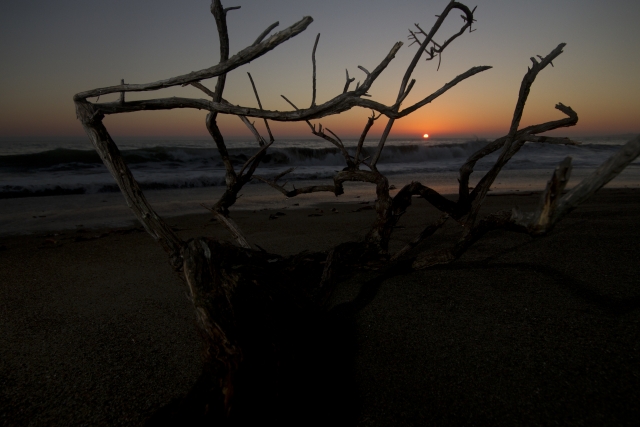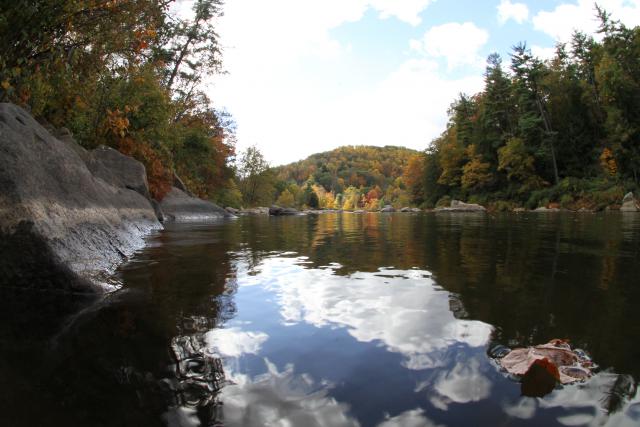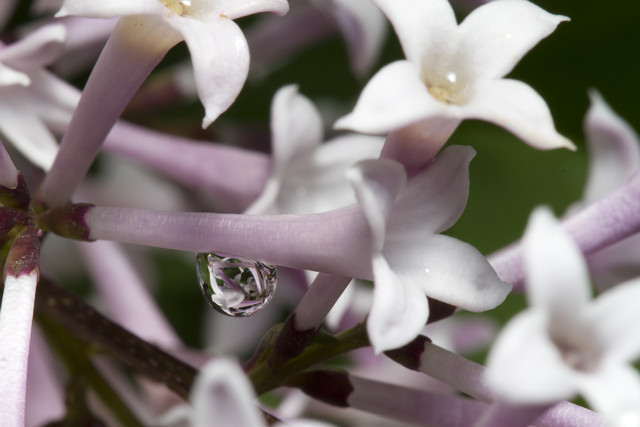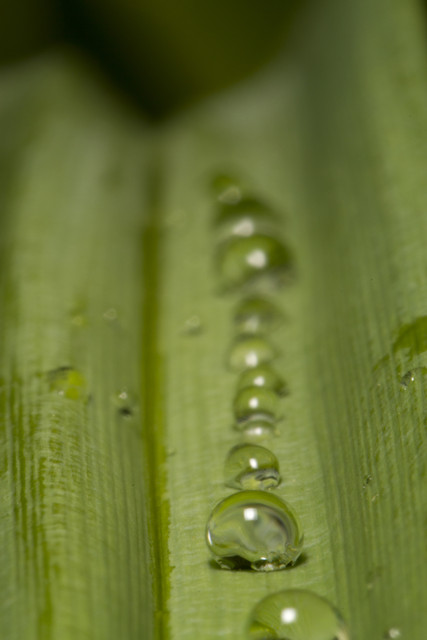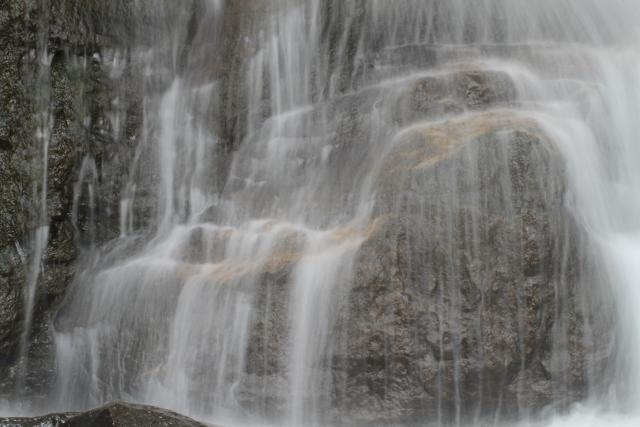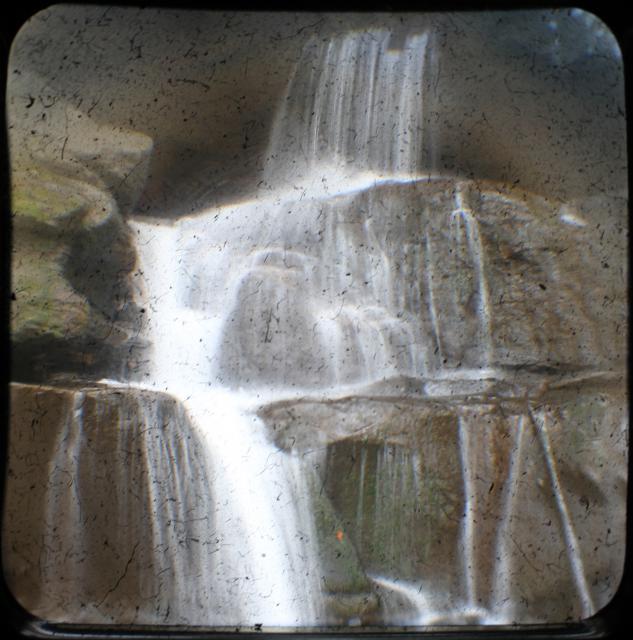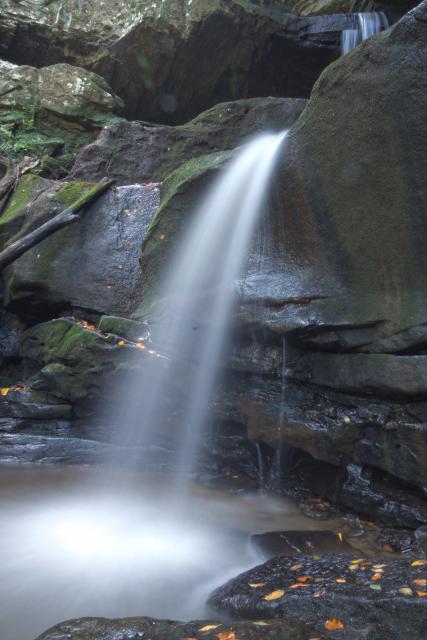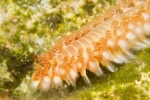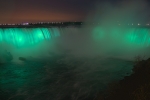water
California Trip: Cambria Sunset
ktuli — Mon, 09/03/2012 - 11:59
Unfortunately, we didn't get any spectacular sunsets during our whole trip...
Technical Data:Canon EOS 7D, Sigma 10-20mm f/4-5.6 EX DC HSM AF at 10mm, 1/250 sec at f/8. ISO 200. Canon Speedlight 580EX II flash in auto mode and wireless control.
I'd found this piece of driftwood earlier in the evening as we strolled along the beach and instantly knew I wanted to use it as a foreground element in a sunset photo. So we (well, mostly Anya) carried it along on our walk until the sun started setting. Unfortunately, the colors of the sunset were pretty muted, and I struggled with getting just the shot I wanted. I knew I wanted to be close to the water, which meant I had to shoot hand-held (plus I'd left my tripod back in the hotel room).
I tried all kinds of combinations - including using the flash remotely to give just a little bit of light to provide some detail on the driftwood. It was far from simple as I was shooting from a very low angle using the live-view on the back of the camera, holding the flash with my left hand to get it far enough away and on a pleasing angle, and of course watching for incoming waves (one of which did end up getting my sandals wet.
In the end, I guess I came away with a couple acceptable shots (of the set, the one above is my personal favorite), and more importantly a good learning experience of things to try or not try in the future.
Here's a few more - both with and without this driftwood...
 |
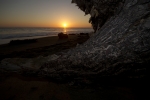 |
 |
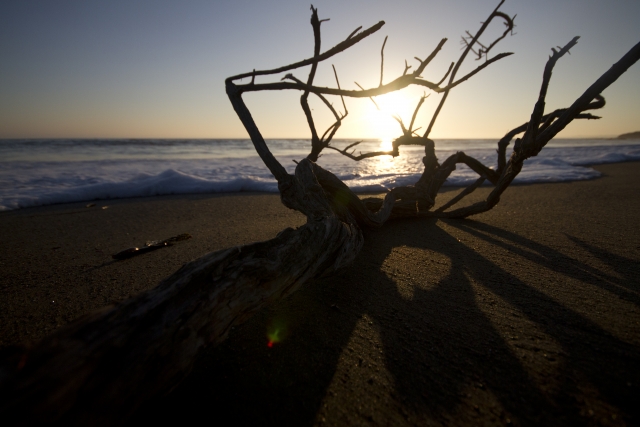 |
||
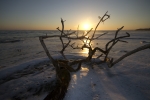 |
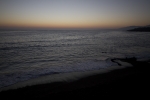 |
 |
I am still making progress through the photos, so hopefully I can get more frequent with the posts. There is still plenty of cool stuff to come....
- Bill
Niagara Falls: Night Lights & HDR
ktuli — Tue, 05/15/2012 - 20:56
So on our trip to Niagara Falls, we only managed to stop at the falls the first night. It was cold (and the other days were colder with rain/snow/sleet), but I had the thought to try some HDR to see about getting a nice shot of the falls but maintaining the color from the lights.
The results are mediocre at best. In particular, the bottom right corner is screwed up in the shadows (and I don't know how to fix it), and it seems (at least with the green lights) the color has shifted a bit.... but being my first attempt, I figured I'd share just the same.
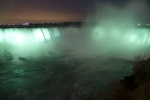 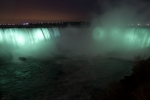 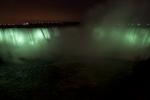 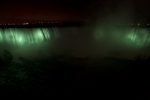 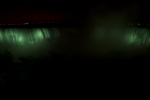 |
 |
Technical Data: Canon EOS 7D, Canon EF-S 18-55mm f/3.5-5.6 II at 22mm, 2.5, 1.3, 0.6, 1/6, 1/3 sec respectively at f/4. ISO 800. RAW processing in Adobe Camera RAW and HDR processing Adobe Photoshop CS5.
If you mouse over each smaller thumbnail, you will see the series of shots used to create the HDR image. Individually, you can see that no single shot could capture everything - either the lights on the falls would over expose or the shadow areas would just become fields of black.
Looking at it again really illustrates just how bad the HDR processing is, and I definitely think it warrants trying another processor to see if I can come up with better results... but for now, you get the idea.
- Bill
Fall Day Through a Fish-Eye
ktuli — Thu, 09/15/2011 - 19:42
Well - the weather today is brisk and certainly gives the feeling of fall, so I looked back through the archives and came up with this fun autumn shot using Tom's Sigma 10mm fish-eye lens.
Technical Data: Canon EOS 7D, Sigma 10mm f/2.8 EX DC HSM Fisheye (borrowed), 1/50 sec at f/12.9. ISO 200. No post production. Ohiopyle, Fayette County, PA.
What Works: The distortion caused by the fish-eye lens produces a nice effect of making both sides of the creek loom a little larger while causing the hillside at the middle of the frame where the creek turns seem much smaller. The 10mm focal length allows the floating leaf in the foreground to appear much larger than it might have otherwise looked.
What Doesn't Work: Unfortunately, the clouds are completely blown out, and there is absolutely no detail there, producing a large area of dead space and a very uninteresting sky. The position of the leaf is just a little bit off - preferably it would have been a little more up and to the right... and ideally on a slightly different rotation (but it drifted out of reach before I could get it right).
Hopefully we'll have a colorful fall and I can get out and get some more autumn shots this year.
- Bill
Droplet of French Lilacs
ktuli — Tue, 05/24/2011 - 20:12
The same day I found the day lily leaf with water droplets, I found this droplet hanging from one of the french lilacs.
Technical Data: Canon EOS 7D, Canon EF 100mm f/2.8L Macro IS USM, 1/200 sec at f/16. Canon Speedlight 580EX II flash in auto mode and wireless control. Image Stabilization on. ISO 160. RAW processing in Adobe Camera Raw.
I really like how the droplet of water seems to have an alternate world of french lilacs trapped inside. The scene is jam packed with those small lilacs and it still feels like if that drop were to pop that a million more would spill out.
- Bill
Poll: More Water Droplets
ktuli — Fri, 05/20/2011 - 20:43
It has been a while since I've done a poll, and I took several different shots of this day lily leaf with water droplets on it that I feel this is a good way to share them all. So here goes...
 |
Version 1 1/200 sec at f/16 |
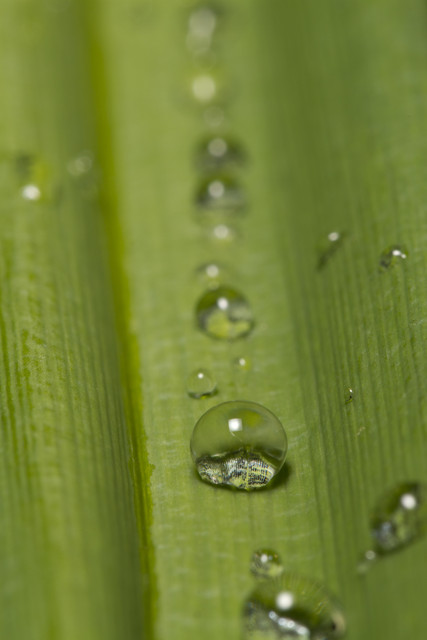 |
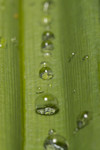 |
Version 2 1/160 sec at f/22 slight crop |
|
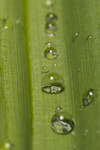 |
Version 3 1/160 sec at f/22 |
|
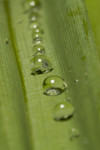 |
Version 4 1/200 sec at f/32 |
|
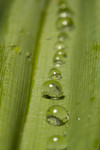 |
Version 5 1/200 sec at f/32 |
Technical Data: Canon EOS 7D, Canon EF 100mm f/2.8L Macro IS USM, shutter speed and aperture as listed. Image Stabilization on. ISO 160. RAW processing in Adobe Camera Raw (and additional cropping as listed).
I know, they all look pretty similar, but after a bit, you really can see just how different each one is. And while the differences may look random, some of them are quite intentional.
For example, you will notice that I specifically switched apertures (smaller opening, larger f/#, more depth of field) to control the depth of field as I went along, which allowed me to get more of the droplets in clarity. (Ignore that for a couple shots the shutter speed switched to 1/160 - I don't know how that happened, and apparently I fixed it after a couple shots). But then I also intentionally played around with the angles, trying to see whether a diagonal view would look better than straight centered.
I will admit that I should have been doing this whole exercise with a tripod (and preferably with a Wimberly Plamp), but I still haven't upgraded my tripod, and as such still don't use the tripod as often as I would like. However, had I done so, we'd probably have three times as many shots to compare here, so maybe it is good that I didn't...
I honestly can't choose which version I like the best. Probably because I like elements of each - some I should have combined for a single better image, and some I simply couldn't combine (ie: liking both the diagonal and the straight centered).
Cast your vote and let me know which one(s) you like best (yes, I opened this one up to multiple selections!) and don't forget to leave a comment letting me know why you picked the one(s) you did.
Thanks!
- Bill
Water Droplets
ktuli — Thu, 05/19/2011 - 19:23
Just going to post a shot I took yesterday. The rain had just eased up for a bit, and I headed out hoping to find some butterflies or bees taking advantage of the the break in the rain, but instead found plenty of shots with water droplets on the various plants. This one was on the leaf of a day lily and the line of drops just screamed to be photographed with the macro lens I had on...
Technical Data: Canon EOS 7D, Canon EF 100mm f/2.8L Macro IS USM, 1/200 sec at f/32. Image Stabilization on. ISO 160. RAW processing in Adobe Camera Raw.
- Bill
McConnell's Mill Waterfall with Macro
ktuli — Tue, 04/19/2011 - 19:25
Normally, you wouldn't use a 100mm macro lens to photograph a waterfall. Most times, if you're standing at the base of a waterfall, you reach into your bag and pull out a wide angle lens to capture the whole scene.
However, a couple weeks ago, I decided to try a longer focal length to get a more intimate view of only a portion of the waterfall. This is the result...
Technical Data: Canon EOS 7D, Canon EF 100mm f/2.8L Macro IS USM, 1 sec at f/32. Image Stabilization on. ISO 200. No post production.
Why This Photo: I have been to this waterfall several times so far, and I decided I wanted to find a different shot to come back with. Along with the TTV waterfall shots, I decided to isolate only a portion of the falls - to concentrate on the look of water cascading over the rough stone surface.
What Works: The slow shutter speed produced a nice soft look to the flowing water, while the sharp focus on the rock texture provides the nice juxtaposition between the two - particularly with the large portion of rock only partially obscured by the water in the bottom right corner.
What Doesn't Work: There is a small rock protruding into the frame in the bottom left corner. Additionally, the flow of the water is not as strong on the left edge of the frame. Perhaps a slightly tighter crop would eliminate these problems.
Drop me a comment and let me know what you think.
- Bill
TTV: McConnell's Mills Waterfall
ktuli — Wed, 04/06/2011 - 20:49
Ok - got another TTV shot for you today. This was the first time I'd taken the TTV rig anywhere other than Phipps, so it was kind of fun. Trying to scramble up the rocky hillside to this waterfall while juggling my camera bag, my DSLR, tripod, TTV rig, and monopod on the other hand was not so much fun.
I really don't know why these photos have so much more grit and grain to them than previous examples. It possibly could be because of the difference in focal distances - most of the TTV done at Phipps is done within a couple feet of the subject, here I was working in the tens of feet.
I also found that focusing was much more difficult this time around. I had a razor thin range on the lens that would put the scene into focus, and even then it was just a touch away from focusing purely on the grit and grain on the Argus' viewfinder lens.
Regardless, here's another shot I brought back on Sunday...
Technical Data: Canon EOS 7D TTV Argus Seventy-Five, Tokina AT-X M35 Pro DX AF 35mm f/2.8 Macro 1:1, 1/5 sec at f/8. ISO 200. Monopod and handheld. Cropped in Photoshop CS5 Extended.
Why This Photo: I've shot this waterfall before and I thought that since I was at the park for a field workshop for my class, that I would give it the TTV treatment to change things up instead of coming back with the same shot again.
What Works: The curving path of waterfall is pleasing to me, while the slow shutter speed produces that nice soft fluffy water.
What Doesn't Work: The grit and grain is just too distracting this time around I think - perhaps I need to clean up the viewfinder a little. Additionally, that razor thing focus range means that this shot is a little soft. And the long shutter speed to draw out the detail in the rocks produces a completely white stream of water that is a bit overpowering.
Even with its flaws, I still really like the shot, and may be convinced to head back in the summer with a different TLR (perhaps the Anscoflex II) and try it again.
Drop me a comment and let me know what you think!
- Bill
TTV: McConnell's Mill Covered Bridge
ktuli — Tue, 04/05/2011 - 20:05
Technical Data: Canon EOS 7D TTV Argus Seventy-Five, Tokina AT-X M35 Pro DX AF 35mm f/2.8 Macro 1:1, 1/16 sec at f/9.1. ISO 200. Monopod and handheld. Cropped in Photoshop CS5 Extended.
I'm busy with some other stuff tonight, so you'll have to provide your own critique. Thanks for stopping by.
- Bill
HDR: McConnell's Mill Waterfall
ktuli — Wed, 03/30/2011 - 17:48
As promised many, many ages ago, I've finally processed that set of waterfall photos into an HDR image.
I used a freeware program called Picturenaut to produce the final HDR image. In the end, I like the image but wonder if the HDR was even worthwhile in this particular case (or given the range of exposures I used to built it).
After completing the HDR, here are my thoughts on the results:
- I should have cleaned up the scene some more - at this point, I find all the dead leaves distracting, and a nice clean rock and water scene would have been more pleasing.
- I need to pay more attention to the lens flares and water droplets on the front of the lens because they might not have been distracting in the original shots (and probably not even noticed on the LCD on the back of the camera), but they definitely are noticeable now.
- I should have selected a wider range of exposures to use for this kind of HDR set. Particularly, I should have explored the darker end of the set more - perhaps expanding down a further stop or two.
- I should have figured out what that spot in the middle of the frame was.
All in all, I am actually pretty pleased.
I've seen so many HDR images that have horrible halos around everything that they looked like you were looking at the scene through some crappy 3D vision glasses. As I'm sure you know by now, I am not a huge fan of post production work. I like to get the shot right once in the camera and leave it at that. I'm slowly coming around, but I still don't want to look at an image and tell it has been so overworked and couldn't possibly have come from a camera directly. It works for some folks, and sometimes it looks nice, but it just isn't for me.
Remember to stop back and check out the original post to get a bit of comparison, then drop me a comment and let me know what you think.
- Bill

